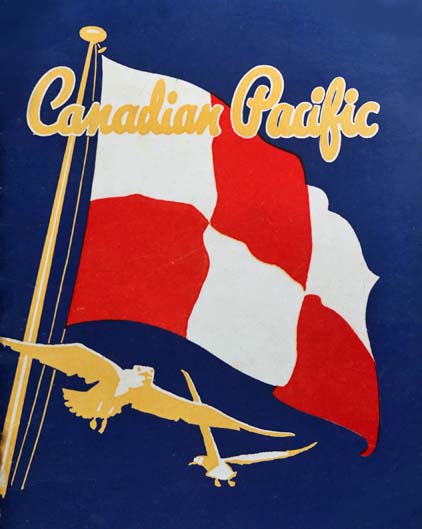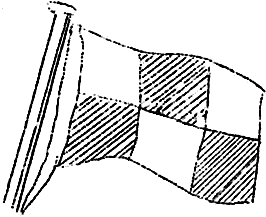Back
Title
Article
Links

The Canadian Pacific first entered the steamship business in 1884 when they purchased the ALBERTA, ALGOMA, and ATHABASCA to operate on the Great Lakes and to assist in the construction of the railway across the continent which was completed in 1886. These vessels were built in Scotland and had to be cut in sections in Montreal in order to pass through the Welland Canal.
Explorers and traders had searched for a North West passage from Europe to the East for many years without success. In 1886 the Canadian Pacific realized the commercial possibilities of such a route via its transcontinental railway and started a service across the pacific ocean by chartering the 800 ton barque W.B. FLINT. The first cargo from China was landed at Port Moody, British Columbia, on the 26th July 1886 and consisted of 17,430 half chests of tea addressed to cities in Canada, the United States, and Europe. This was only three weeks after the first train had crossed the continent.
In 1887 the Company chartered three steamers, the ABYSSINIA, BATAVIA, and PARTHIA to operate between Vancouver, Yokohama, and Hong, Kong. This service proved so successful that in 1891 the Canadian Pacific had three new steamers built expressly for this service, the EMPRESS OF CHINA, EMPRESS OF INDIA, and EMPRESS OF JAPAN. They became known as the White Empresses of the Pacific, and were famous for their speed and beauty.
In 1903. the Canadian Pacific forged the third link in the North West route to the Orient by purchasing the Beaver line from the Elder Dempster Company operating these Vessels from the U.K. to Canada thus establishing a Commonwealth route from Great Britain to Japan and China, via Canada.
While continuing to build new ships from time to time, the Company strengthened its position on the Atlantic by purchasing the Allan Line in 1916. This company's ships first sailed to Canada from the Clyde in 1820.

All ships fly the Company's house flag, the red and white "chequer-board". Upper row, white to mast, red and white to fly.
Funnels are buff coloured, with the house flag painted on each side. Cargo liners have black hulls and the passenger liners white hulls with a green band.
All vessels on the Atlantic service bring large cargoes from Canada consisting of foodstuffs, (wheat, bacon, eggs, and canned goods) timber, paper, asbestos, copper, and aluminium.
On the return voyages to Canada they carry mostly manufactured goods, woollens, cottons, machinery, pottery, glassware, automobiles, chemicals, iron, and steel (sheets, rods, tubes, wheels, and tinned plates). From Antwerp the chief cargoes consist of textiles, glassware, machinery, and Dutch bulbs.
EMPRESS OF SCOTLAND - A twin screw geared turbine ship built on the Clyde in 1929 by the Fairfield Shipbuilding Co., 666 feet in length, 87 ft. 9 inches in breadth, with a gross tonnage of 26,313 and a speed of 21 knots. She carries 660 passengers.
EMPRESS OF SCOTLAND - A twin screw geared turbine ship built on the Clyde in 1929 by the Fairfield Shipbuilding Co., 666 feet in length, 87 ft. 9 inches in breadth, with a gross tonnage of 26,313 and a speed of 21 knots. She carries 660 passengers.
EMPRESS OF AUSTRALIA (ex De Grasse) - Twin screw geared turbine built by Cairmiell Laird of Birkenhead in 1924. 571 feet In length, 71 feet in breadth, with a gross tonnage of 20,000. She carries 663 passengers.
These passenger liners operate a regular schedule from Liverpool to Quebec City and Montreal in summer and from Liverpool to Saint John, New Brunswick, in winter. They carry first class and tourist passengers and some cargo. Two new 22,500 ton Empress ships are at present being built, one by Fairfields and the other by Vickers-Armstrong.
BEAVERBRAE A diesel-electric single screw vessel built in 1939 of 9,000 tons, 490 feet long, 60 feet in breadth, with a speed of 16 knots. At present engaged as an immigrant ship, taking passengers from Europe to Canada. Cargo is also carried.
BEAVERLAKE, BEAVERGLEN - These single screw turbo-electric vessels built on the Clyde in 1945 by Lithgows are sister ships, 497 feet in length, 64 feet in breadth, with a gross tonnage of 10,000 and a speed of 16 knots. They operate a regular service from London to Montreal in summer and from London to West Saint John, N.B., in winter. Periodical calls are made at Antwerp.
MAPLECOVE, MAPLEDELL - Sister ships of the Beaverlake and Beaverglen. Their names were changed from Beavercove and Beaverdell in September 1952 when they were transferred from the North Atlantic to the Pacific. They operate from Vancouver to Tacoma, Seattle, Yokohama, Kobe, Manila, Cebu, Hong Kong, and return.
BEAVERBURN, BEAVERF0RD - These geared turbine single screw vessels were built at Dundee in 1945 by Caladon Shipbuilding Co. as "Empire" ships. They are 465 feet in length, 64 feet in breadth, with a gross tonnage of 10,000, and a speed of 15 knots.
BEAVERLODGE - A geared turbine single screw vessel, built by the Furness Shipbuilding Co. of Haverton Hill on Tees in 1943 as the Empire Regent. She is 497 feet in length, 64 feet in breadth, with a gross tonnage of 9,900, and a speed of 15 knots.
In addition to cargo these three ships also carry 12 passengers. They operate from the U.K to Montreal in summer and to West Saint John N.B. in winter.
The Company also operates steamship services in Canadian coastal waters, on the Great Lakes, and other Inland waters.
April 1954